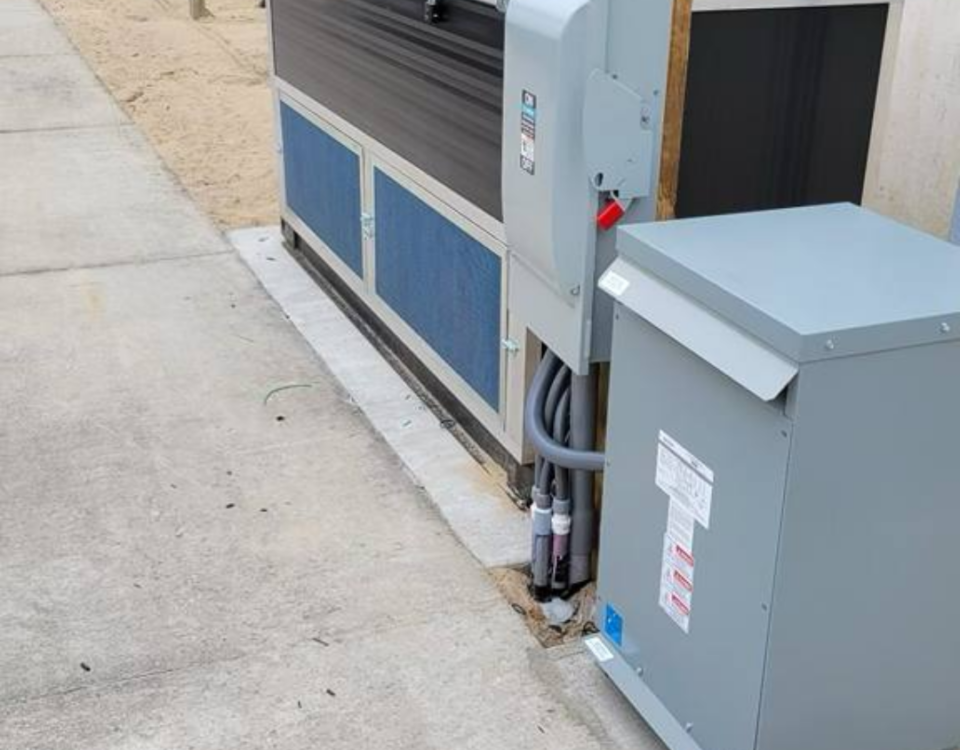Choosing your Bitcoin Mining Hardware
A general reference guide with uncommon considerations
Part 1: Measuring Up the Antminer S21 Pro and the Whatsminer M60
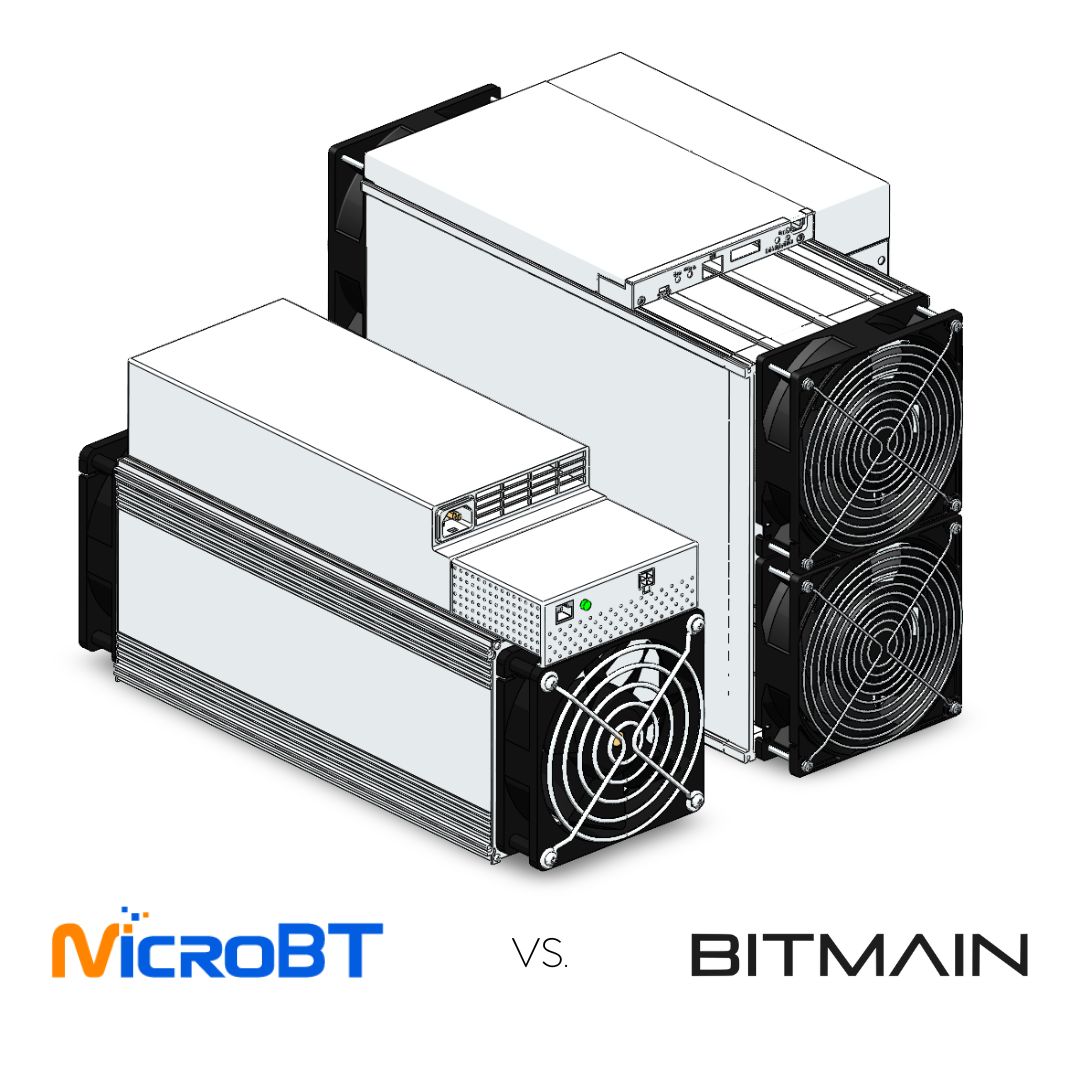
More than just price and efficiency
This article aims to provide a general overview of some key factors beyond simply price and efficiency when choosing Bitcoin mining hardware. Certainly the cost of the hardware, both the upfront capital and operating costs, are the most important considerations driving hardware sales, however a successful bitcoin mining project depends on a whole lot more. I am writing this as a brief reference guide to help inexperienced miners succeed.
I realized as I started writing this today that I wasn't going to be able to put everything in one post, so I will be splitting it up into multiple parts, likely as follows:
Part 1: Measuring up the Antminer S21 Pro and the Whatsminer M60
Part 2: Performance and stress testing the Antminer S21 Pro and the Whatsminer M60
Part 3: Guide for Successful Application(s) of Mining Hardware
For today, in Part 1, I am focusing on the high level differences in publicly stated specs between the Antminer S21 Pro and the Whatsminer M60, which in my opinion are the two best machines by the two best vendors in the market (as of Jan 1, 2025). I also chose these models because the design and performance differences between them is much more significant than most of the other hardware models on the market. For example, a lot of competing hardware are essentially just Antminer clones, at least in terms of general form factor, so there would not be as much to glean from highlighting them.
In Part 2 I will conduct actual miner performance testing / do a detailed review of each miner. In Part 3 I will comment on how to successfully apply bitcoin mining technology.
Notes:
- This article is only focused on air cooled miners, though many of the considerations will also apply to miners designed for immersion or hydro cooling.
- While I am only comparing one model of MicroBT to Antminer machines, most of this information gleaned below can be extrapolated to any other machines you may be considering for your project.
- I will try to limit subjective opinion, as many reading this will already know I personally prefer Whatsminer brand hardware.
- As always, please beware when purchasing miners as there are many scams to fall victim to - only buy from brokers with solid reputations / track record like Upstream Data! When possible, buy from the manufacturer direct.
Size... Matters
I have spent the last 8 years designing and manufacturing rack space for bitcoin miners for mobile, compact and distributed applications. If there's one thing I like about mining hardware, it is a tight package! The physical size of the mining hardware matters for a variety of factors as detailed below:
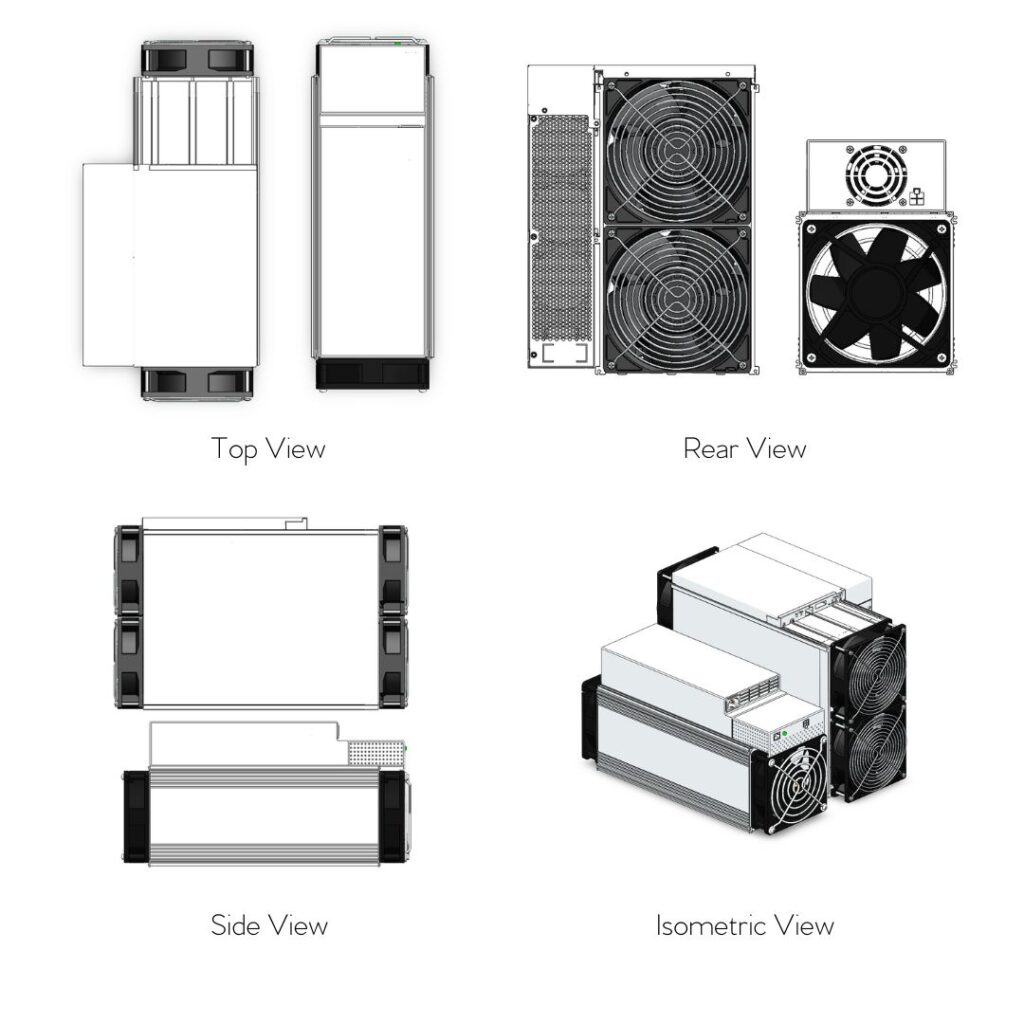
S21 Pro vs Whatsminer M60 Dimensional Views
Hash Density and Rack Space
The power density of mining hardware, which I define as rated wattage divided by cross-sectional area, is a key consideration in project design and development. Lately I have been getting a lot of requests from clients about building them custom solutions to fit their second-generation hardware for large underclocking, such as the Antminer S19 series. They want to pack in more miners and run them at lower, more efficient and stable clocking in order to improve overall energy efficiency and reliability. Makes sense!
The challenge of course is that this means that rack space needs to be up to 2 times the physical space to accommodate 2 times the miners. That's a lot more cost in steel to build bigger enclosures / rack space, not to mention potentially more costs in power distribution and cooling to accommodate. As you can see in the detailed views above, Antminers are large!
For further reference, here is a typical square rack we manufacture at Upstream Data that demonstrates a typical racking arrangement for both miners. This rack is designed to fit up to 24 miners at nominal rated loading, the rack dimension is driven by the Antminer form factor because Antminers have most of the global market share / customer demand, so we accommodate their large size (much to my annoyance!).
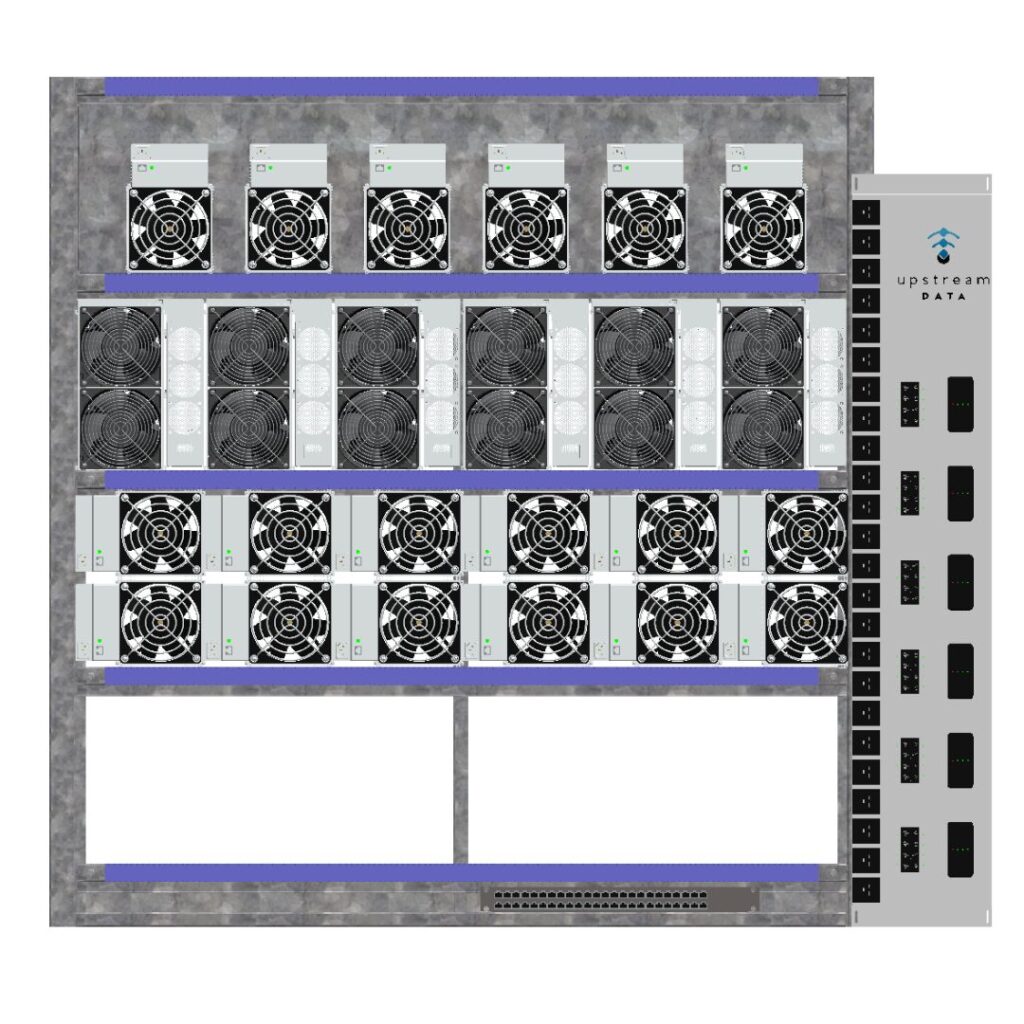
Rack Density
The top two shelves show Whatsminer M60 and Antminer S21 Pro at our normal 6x miner per shelf layout. As you can see, Antminers physically take up a lot more rack space than Whatsminers, yielding lower nominal power density capability.
Because Whatsminers have higher power density it is possible to stack more on a given rack. In our rack in particular, while I don't recommend it, it is possible to rack up 10x miners per shelf (render showing 12 but only 10 actually fit) by clocking the miners to ~50% of nominal load and using split cables from the PDU. In theory the rack could cool it just fine since loading and CFM requirements should be around 50% vs nominal.
As you can see below, when lining up two Whatsminer models next to an Antminer S21 Pro on its side, it is basically a 2-for-1 fit.
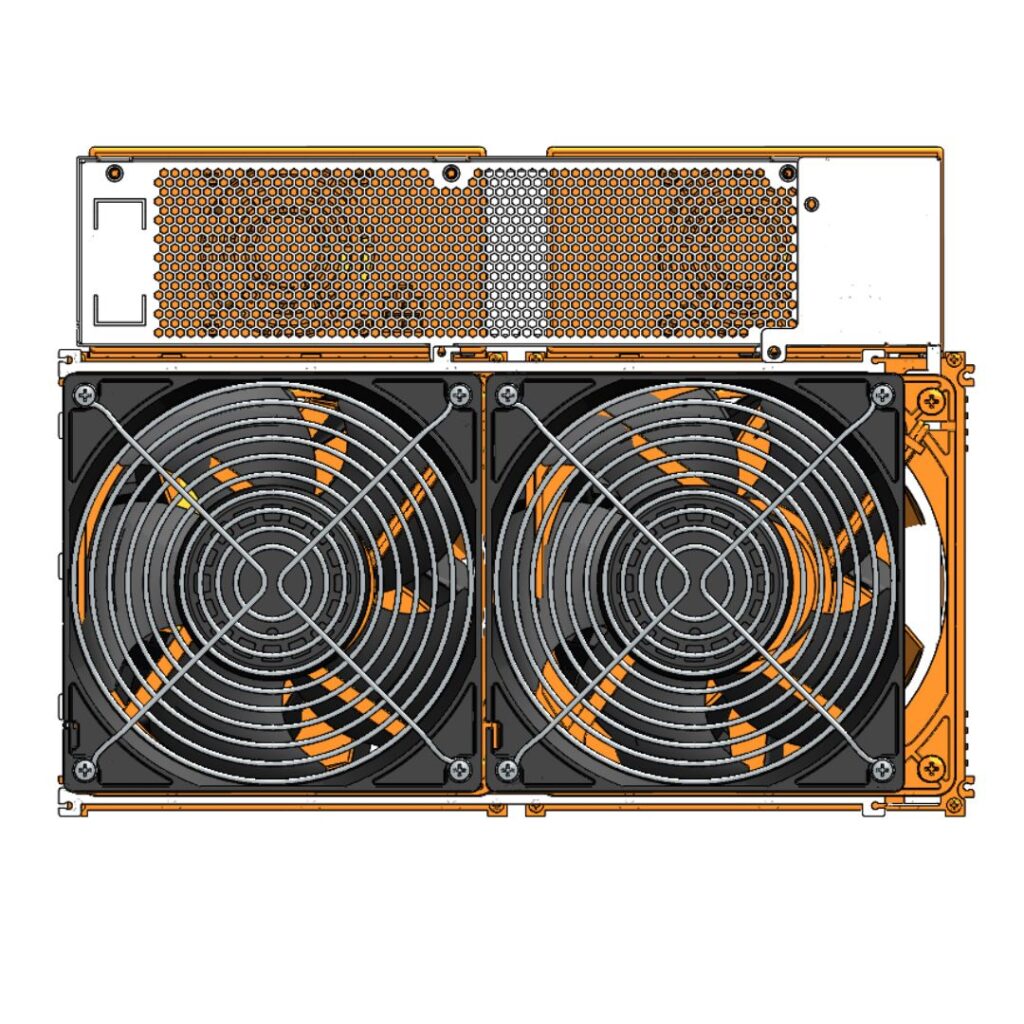
Two Whatsminers (orange highlights) per Antminer
Recommendation: Consider power density in your miner selection. Physical miner size is important to consider as the market continues to trend towards hardware commoditization and marginal profits. More and more miners are going to want to use more hardware at lower, more efficient clocking to squeeze out every bit of hash they can get for a given kWh. Make sure you have the rackspace!
Shipping and Handling Costs
Given bitcoin mining's distributed nature and ability to quickly relocate to wherever energy is cheapest, the cost of shipping and handling is a very important consideration.
Obviously, the size of the miner will affect its cost to ship to any given location. While hardware brokers can give a better dataset for miner shipping costs, I took a proxy quote from Fedex's online calculator to ship 40 units of each miner, in its original packaging, across the US from Seattle to NYC. The results are as you would expect:
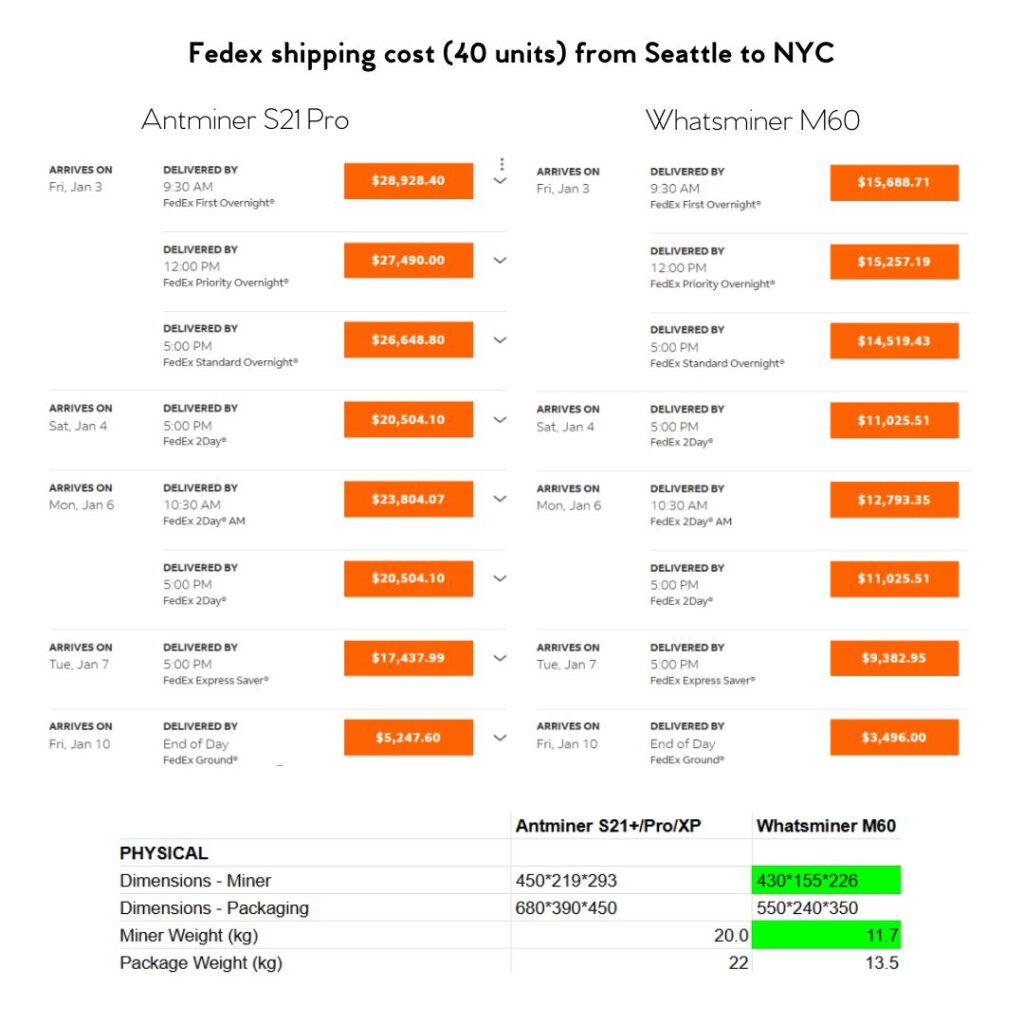
S21 Pro vs Whatsminer M60 Shipping and Handling
As expected, the smaller package is significantly cheaper, as much as half the shipping cost of the Antminer S21 behemoth. This cost is not just a one-time cost upon miner order, but it is a cost that may also be incurred every time the miner moves locations. For example, repair is a common reason to ship a miner to / from a site.
Recommendation: the per-miner shipping and handling costs over the life-cycle of the hardware should be incorporated into unit economic analysis.
E-waste and Environmental
While not an important consideration for most, physically larger mining hardware means more e-waste. For the environmentally conscious miner, minimizing e-waste is an important factor so when choosing mining hardware the lowest weight machine will generally mean the most environmentally friendly, all other factors being equal. Higher weight and physical size also drive up fuel and transportation costs, and therefore NOx emission / resource usage.
Tip: CoinMetrics does a great job estimating global e-waste from mining hardware.
Recommendation: If e-waste and general environmental impact is important to you then consider purchasing the miner that is lower size and weight.
Worker Ergonomics / Safety
Also not a huge factor for many, but worth considering. OSHA's safe weight standard for manually lifting loads, by the average worker, is 51 lbs. The S21 pro is just under that weight at about 45 lbs and is already too much to handle for many people of sleight build. If mining hardware gets much larger then many mining businesses will have additional safety risks / overheads to consider for their employees.
Recommendation: If you or your staff cannot safely handle hand-bombing 50 lb loads then consider choosing the smaller mining hardware for your project.
Effective cooling is critical
In my humblest of opinions, the cooling capability of your mining hardware as a key purchase consideration is largely overlooked by the bitcoin mining industry at large, even by experienced miners. To this day Bitmain, who is by far the leading hardware supplier, still does not list the cooling specs of their miners on their website (!!!). This is crazy to me, because cooling capability is as important as chip efficiency. Cooling performance directly impacts hashrate performance / depreciation, hardware reliability and downtime - three costs which, together, exceed power costs (!!!)
Have you ever been to a bitcoin mining tech conference where the vendor announces a new miner and actually details how much better, more efficient and more reliably it cools in extreme weather? Me neither, though I expect this will change as hardware reliability increasingly becomes the #1 purchasing factor.
While Whatsminer cooling specs were readily found on the manufacturer website, to get data on Antminer cooling specs I had to spend hours watching YouTube reviews of Antminer hardware by various brokers to catch a glimpse of the fan label so I could figure out the fan capability on the S21 Pro. Even with this data I had to extrapolate the cooling CFM requirements for Antminers by factoring it against the Whatsminer air flow requirements. You can go to the spreadsheet linked below to check out the math.

Miner Cooling Comparison
Cooling - it's not only fans
At a glance, given that the Antminer S21 Pro has twice as many 140 mm, 5A fans as the Whatsminer M60. The total power draw of all fans for the Whatsminer is 55% of the Antminer, which of course makes sense given it has half the fans. We can conclude that from a air flow rate *capacity* perspective the Antminer is clearly superior. But does more airflow mean more *effective* cooling?
As Newton taught us, heat transfer is not only just about fan capacity and CFM, chip temperature and overall cooling efficiency / thermal design of the hardware is equally important.
There are a lot of design factors that go into mining hardware that enable better heat transfer, regardless of the air flow rate. For example: heat sink form factor, surface area, effective cross-sectional area, material grade, thermal paste application / efficiency, hashboard substrate material, PCB component layout, ASIC (chip) size, ASIC layout, enclosure design, etc, etc. - these all play into heat transfer efficiency.
It remains to be seen if the Antminer S21 Pro cools better than the Whatsminer M60, only performance testing can verify, which we will do next. It is reassuring that the Antminer can pull almost twice as much air flow than the Whatsminer, but it does come at proportionally higher power draw, as high as 7% of the total rated power! It remains to be seen if this souped up air flow capability exists to accommodate extreme heat conditions, or significant overclocking, or if it is simply required to overcome deficiencies on hashboard thermal design. We shall see!
A higher cooling capacity also means mining facilities need to be designed to match. Typically it is best practice to ensure a mining enclosure can handle at least the amount of air flow as the maximum possible draw of the miner fans.
Recommendation: Pending Performance Testing in Part 2.
(Until then, we can safely assume that bitcoin mining facilities will need to accommodate up to two (2) times the airflow for an Antminer vs a Whatsminer, if cooling the same quantities of hardware at full potential.)
Up Next
In Part 1, we kept things simple and high-level, with mostly publicly available info. Many of the considerations I highlighted are often overlooked.
To summarize, Whatsminer stands out for its potential cost efficiencies relating to rack space, shipping, and environmental. This is due to its smaller, more power-dense design. However, Antminer seems to have a much higher cooling capacity. In Part 2, we’ll dive into actual performance testing to verify cooling efficacy and overall hardware efficiency in non-standard conditions, using varying firmware.
In Part 2 I intend to stress test both miners and provide deeper commentary on cooling considerations, hardware design / reliability, firmware comparison, and more.
In Part 3 I intend to give you some tips, based on what we learned in Parts 1 and 2, on how to apply bitcoin mining hardware successfully. We will discuss the main considerations in your mining facility design to yield maximum success, as well as target applications for the technology.
Stay tuned!
♥ Steve
PS - Happy New Year!
References
- Spreadsheet I made comparing the hardware metrics presented
- https://docs.google.com/spreadsheets/d/1UssZ5N4ofkz8AXqOzgPSBYJ_YO-L_5flV538o_w5mq0/edit?usp=sharing
- Most info is simply from public specs, CAD models are accurate.




